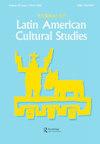Inverted Exception. Ideas for Thinking about the New Disappearances through Two Case Studies
IF 0.3
4区 社会学
Q4 CULTURAL STUDIES
引用次数: 5
Abstract
The concept of state of exception has been key for explaining the spaces of enforced disappearances in the 1970s and 1980s in the Southern Cone, to the point that it has become a trope. This article takes up that concept, but revisits and alters it. It turns it around, proposing for what we call the “new disappearances” the concept of “inverted exception”. It does so through the examination of two concrete empirical situations – migrant houses in Mexico and the sanctuary movement in the United States – applying the same ethnographical observation approach to both and using the analysis of those situations to inform the theoretical reflection proposed here. The conclusion is that, while these “new disappearances” have, like enforced disappearances, a direct and close relationship with “spaces of exception”, that relationship now operates inversely: the space of exception is today sometimes the space of appearance, while the norm is widespread disappearance.倒例外。通过两个案例来思考新的失踪案例
例外状态的概念一直是解释上世纪70年代和80年代南锥体强迫失踪空间的关键,以至于它已经成为一种比喻。本文继承了这个概念,但对其进行了重新审视和修改。它反过来,为我们所说的“新失踪”提出了“反向例外”的概念。它通过对两种具体的经验情况——墨西哥的移民之家和美国的庇护运动——的检查来做到这一点,并对这两种情况采用相同的人种学观察方法,并利用对这些情况的分析来为本文提出的理论反思提供信息。结论是,虽然这些“新失踪”与强迫失踪一样,与“例外空间”有着直接而密切的关系,但这种关系现在是相反的:例外空间在今天有时是出现的空间,而常态是广泛的消失。
本文章由计算机程序翻译,如有差异,请以英文原文为准。
求助全文
约1分钟内获得全文
求助全文

 求助内容:
求助内容: 应助结果提醒方式:
应助结果提醒方式:


